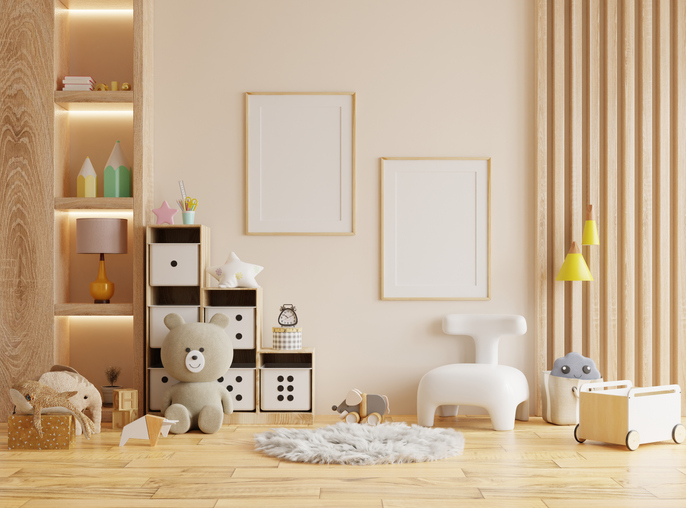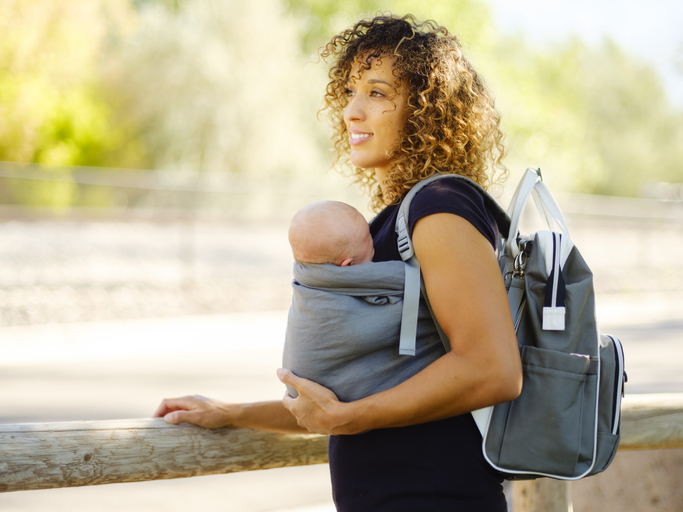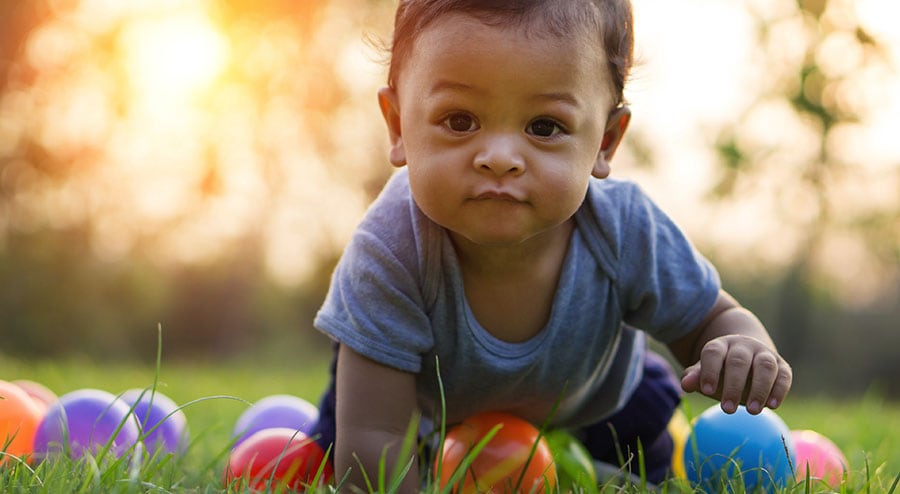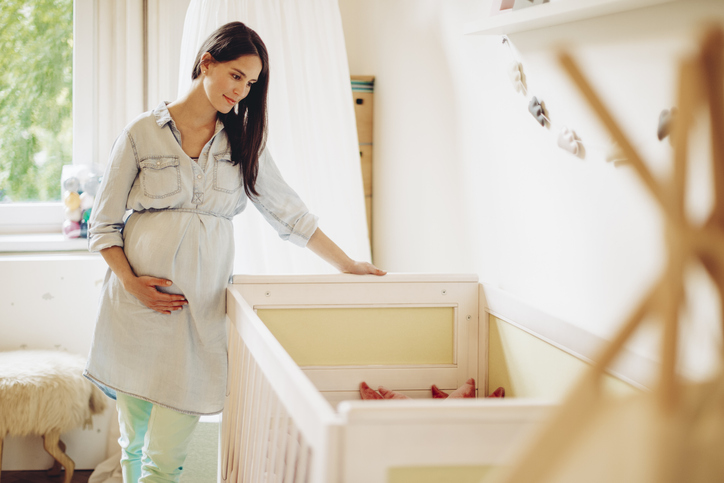When creating a nursery for your baby, safety should be your utmost priority. A well-designed and organized nursery not only provides a comforting environment for your little one but also ensures their safety as they explore and grow. Every decision, from furniture choices to accessory placements, can have a significant impact on your baby’s well-being.

Organizing the nursery effectively is essential for maintaining a clutter-free and hazard-free space. It not only makes it easier for parents to access baby essentials but also reduces the risk of accidents. Properly securing furniture and accessories is equally vital to prevent tipping incidents, especially with heavy items like dressers and bookshelves.
Table of Contents
- Essential Furniture and Accessories for a Safe Nursery
- Organizing Furniture for Maximum Safety and Functionality
- Ensuring Crib Safety
- Securing Furniture to Prevent Accidents
- Childproofing Electrical Outlets and Cords
- Non-Toxic Paint and Wall Coverings
- Safe Storage Solutions for Baby Accessories
- Baby Monitor Selection and Safety
- Window Safety and Baby-Proofing
- Safety Precautions with Nursery Accessories
- Conclusion
Essential Furniture and Accessories for a Safe Nursery
The most crucial piece of furniture is, undoubtedly, the crib. Opt for a sturdy and JPMA-certified crib, such as the Delta Children Emery 4-in-1 Convertible Crib (approximately $200), which grows with your child and meets all safety standards. Alongside the crib, a crib mattress is equally important. Consider the Newton Baby Crib Mattress (around $300), which is breathable, hypoallergenic, and free from harmful chemicals.
Other essential furniture items include a changing table or dresser with a changing pad on top. The Storkcraft Avalon 6 Drawer Universal Dresser (approximately $300) offers ample storage and a safe changing space. To keep your nursery organized, invest in a versatile storage solution like the Delta Children Deluxe Multi-Bin Toy Organizer (around $40) to store toys, blankets, and clothing neatly.
Importance of Safe, Non-Toxic, and Age-Appropriate Choices
Safety is paramount when selecting furniture and accessories for your nursery. Opt for products made from non-toxic materials and finishes to avoid exposing your baby to harmful chemicals. Look for items with Greenguard Gold certification, ensuring they meet rigorous standards for low emissions and are safe for indoor use.
Furthermore, age-appropriateness is crucial to prevent potential hazards. Avoid items with small parts that could pose choking risks and ensure that toys and accessories are designed for the appropriate age group.
Addressing Safety Standards and Certifications
When purchasing nursery furniture and accessories, always check for safety standards and certifications. Look for products that meet or exceed safety standards set by organizations like the Juvenile Products Manufacturers Association (JPMA) and the Consumer Product Safety Commission (CPSC). These certifications indicate that the products have undergone rigorous testing and adhere to safety regulations.
You can create a nursery that provides a secure and nurturing environment for your little one’s growth and development, by prioritizing essential furniture and accessories that are safe, non-toxic, and age-appropriate while considering safety standards and certifications.
Organizing Furniture for Maximum Safety and Functionality
When organizing the nursery, consider creating distinct zones to optimize functionality and safety. Place the crib away from windows, cords, and other potential hazards. To maximize accessibility, position the changing table or dresser near the crib, ensuring it is at a comfortable height for diaper changes. Utilize the Delta Children Eclipse Changing Table (approximately $120), which offers ample storage and safety rails for added security.
Keep frequently used items within arm’s reach, such as baby wipes and diapers, by utilizing a caddy or organizer attached to the changing table. The Munchkin Diaper Duty Organizer (around $20) is a practical choice to keep all essentials conveniently at hand.
Proper Positioning of Crib, Changing Table, and Key Furniture
The crib’s positioning is critical for your baby’s safety. Avoid placing it near blinds or curtains with long cords to prevent strangulation hazards. Ensure there are no wall-mounted shelves or heavy items that could fall within the crib’s reach.
Place the changing table against a stable wall, and secure it to prevent tipping. If you opt for a dresser with a changing pad on top, like the DaVinci Kalani 6 Drawer Dresser (approximately $280), ensure it is well-balanced and anchored for stability.
Additionally, consider investing in a glider or rocking chair for feeding and soothing your baby. The Babyletto Kiwi Electronic Recliner and Swivel Glider (around $700) provides gentle motion and a USB charging port for added convenience.
Guidelines for Multi-Story Homes
For parents with multi-story homes, having a nursery on an upper floor requires extra safety measures. Use safety gates at the top and bottom of staircases to prevent falls. The Regalo Easy Step Extra Tall Walk-Thru Gate (approximately $45) is a reliable choice for staircases and doorways.
Consider installing window guards or safety locks on windows in the nursery to prevent accidents. The Guardian Angel Window Guard (around $100) is designed to protect against falls without compromising ventilation.
In multi-story homes, monitor the nursery closely using a reliable baby monitor. The Infant Optics DXR-8 Video Baby Monitor (approximately $170) offers a secure and clear view of your baby, even at night, with its interchangeable lens options.
Ensuring Crib Safety
When it comes to crib safety, meticulous attention to detail is vital. Choose a crib that meets current safety standards, such as the ASTM International and CPSC guidelines. One excellent option is the Graco Benton 4-in-1 Convertible Crib (approximately $160), which offers a sturdy and versatile design that can grow with your child.
Ensure that the crib slats are spaced no more than 2 3/8 inches apart to prevent your baby’s head from getting stuck. Avoid cribs with decorative cutouts on the headboard or footboard, as they may pose entrapment hazards. Also, refrain from using cribs with drop-side mechanisms, as they have been banned due to safety concerns.
Importance of a Properly Fitted Crib Mattress
A well-fitted crib mattress is equally crucial for crib safety. The mattress should fit snugly within the crib frame, leaving no gaps at the edges. Gaps can lead to potential entrapment or suffocation risks for your baby.
Opt for a firm and breathable crib mattress, like the Safety 1st Heavenly Dreams Crib Mattress (around $50), which provides optimal support and comfort for your baby while ensuring a safe sleep environment. Remember to avoid using soft bedding, pillows, or heavy blankets in the crib, as they increase the risk of suffocation.
Using Corner Guards and Edge Protectors
To add an extra layer of safety to the crib, consider using corner guards and edge protectors. These simple yet effective products help cushion sharp edges and corners, reducing the risk of injuries if your baby bumps into them. The Roving Cove Baby Safety Edge Corner Guards (approximately $20) are made from high-density foam and come with strong adhesive backing for easy installation on various nursery furniture.
Regularly inspect the crib for any loose parts, and tighten hardware as needed to maintain stability. Adhering to these crib safety precautions, allows you to create a secure sleep space for your baby, promoting their healthy growth and development without compromising on safety.
Securing Furniture to Prevent Accidents
Dressers, bookshelves, and other tall pieces of furniture can be potential hazards if not properly anchored. The risk of tipping increases as your baby grows and becomes more curious, leading them to grab or climb onto furniture.
To mitigate this risk, invest in furniture anchors like the Dreambaby Furniture Straps (approximately $10). These straps securely attach furniture to the wall, preventing them from tipping over. Ensure that all heavy furniture items in the nursery are anchored, even if they seem stable on their own. Regularly check and maintain the anchors to keep them effective over time.
Methods to Prevent Tipping Accidents
Besides using furniture anchors, there are additional measures you can take to prevent tipping accidents in the nursery. Keep heavy items and frequently accessed items in lower drawers to maintain stability. Avoid placing tempting objects or toys on top of dressers or shelves to deter climbing attempts.
Arrange furniture in a way that redistributes weight and creates a balanced layout. For example, place heavier items at the bottom of a bookshelf and lighter objects on higher shelves. This helps to lower the center of gravity and minimize the risk of tipping.
Safety Guidelines for Anchoring Furniture
When anchoring furniture, ensure you follow the manufacturer’s instructions and use appropriate hardware for the type of wall (e.g., drywall, concrete). If you’re uncertain about installation, seek professional assistance. Regularly inspect furniture anchors and hardware for signs of wear or loosening and promptly address any issues.
In addition to anchoring, consider using corner and edge protectors on furniture to minimize injuries in case of accidental bumps. The Prince Lionheart Corner Guards (around $10) are soft and durable, providing extra cushioning.
Taking these precautions and securing heavy furniture items in the nursery, significantly reduces the risk of tipping accidents, creating a safer environment for your baby to explore and play.
Childproofing Electrical Outlets and Cords
Electrical outlets and cords in the nursery can pose significant risks to curious little explorers. Babies and toddlers may try to insert objects into outlets, leading to electric shocks or burns. Additionally, exposed cords from electronic devices can be potential tripping hazards, causing accidents and injuries.
To address these risks, use outlet covers such as the Safety 1st Outlet Cover with Cord Shortener (around $8) to prevent access to unused outlets. These covers are designed to fit securely and deter children from tampering with electrical sockets. Cord shorteners are also effective in keeping cords neatly coiled and out of reach, minimizing the risk of accidents.
Childproofing Measures for Electrical Safety
Apart from outlet covers, cord shorteners, and cord wraps, there are additional childproofing measures to ensure electrical safety in the nursery. Consider using cable clips or cord concealers to secure cords along walls or furniture, keeping them away from your child’s reach. The OHill Cable Clips (approximately $8) are versatile and easy to install, making them an excellent choice for organizing cords.
Furthermore, ensure that all electronic devices in the nursery are kept away from the crib and changing area. This prevents your baby from reaching and potentially pulling on cords, which could lead to accidents. Keep electrical devices and chargers out of sight and unplugged when not in use.
Recommended Cord Organization Products
Organizing cords effectively not only enhances safety but also keeps the nursery tidy. Cord organizers like the Belkin Cord Concealer (around $10) help bundle and hide cords from lamps, baby monitors, and other devices. Additionally, cable management sleeves like the JOTO Cord Management System (approximately $20) neatly encase multiple cords, reducing clutter.
By diligently childproofing electrical outlets and cords in the nursery and utilizing recommended cord organization products, you can minimize potential hazards and create a safe environment for your baby to explore and play.
Non-Toxic Paint and Wall Coverings
Importance of Safe and Non-Toxic Paint
When considering safe paint, opt for low-VOC or zero-VOC paint options, as they emit fewer harmful volatile organic compounds into the air. The Benjamin Moore Natura Waterborne Interior Paint (approximately $70 per gallon) is an excellent choice for a non-toxic and eco-friendly paint option, providing a wide range of colors to suit your nursery’s theme.
Avoid oil-based paints and those containing harmful chemicals like formaldehyde and phthalates, which can contribute to poor indoor air quality and pose health risks. Non-toxic paints are not only better for your baby but also for the environment, ensuring a safe and sustainable nursery.
Choosing Baby-Safe Wall Coverings
If you prefer wall coverings over paint, ensure you select baby-safe options that adhere to the same non-toxic principles. Look for wallpaper brands like Tempaper, which offer peel-and-stick wallpapers that are VOC-free and lead-free (approximately $100 per roll). These wallpapers are easy to apply, removable, and repositionable, making them a convenient choice for a nursery.
Consider using water-based adhesives and non-toxic glues when installing wall coverings to minimize exposure to harmful substances. Avoid vinyl-based wallpapers, as they may contain PVC and other chemicals that can be harmful to your baby’s health.
Addressing Air Quality Issues and Ventilation
To maintain good air quality in the nursery, ensure proper ventilation. Open windows and use fans to circulate fresh air regularly. If you live in an area with poor outdoor air quality, consider using air purifiers equipped with HEPA filters to remove allergens and pollutants from the air. The Alen Breathesmart 45i (around $430) is an efficient option for small to medium-sized nurseries.
In addition to selecting safe paint and wall coverings, consider using non-toxic nursery decorations like organic cotton wall art and baby mobiles. By addressing air quality concerns and choosing baby-safe materials for wall coverings and decorations, you create a healthy and nurturing nursery environment for your little one to thrive.
Safe Storage Solutions for Baby Accessories
In a well-organized nursery, efficient storage solutions are essential to keep baby accessories tidy and easily accessible. Utilize storage bins and baskets to categorize and store toys, such as the Skip Hop Moby Bath Toy Organizer (around $15) which is a fun and functional addition to the nursery. Cloth storage bins like the Posprica Foldable Storage Bins (approximately $20 for a set of 4) are great for stashing blankets, plush toys, and clothing, keeping the nursery clutter-free.
Invest in a reliable diaper caddy like the Hiccapop Nursery Organizer and Baby Diaper Caddy (around $25) to keep diapering essentials in one place for quick and convenient access during changing time. The organizer is portable and equipped with multiple compartments for diapers, wipes, lotions, and more.
Organizing Baby Care Products for Easy Access
When organizing baby care products, ensure that frequently used items are within easy reach. Use drawer dividers or organizers to keep baby clothes neatly folded and separated by size, making dressing your little one a breeze. The Simple Houseware Closet Underwear Organizer Drawer Divider Set (approximately $15 for a set of 4) is an excellent option for this purpose.
For baby care products like diaper rash creams, lotions, and baby wipes, a wall-mounted organizer like the mDesign Wall Mount Diaper Organizer (around $20) keeps these essentials close at hand during diaper changes. This organizer also has additional hooks for hanging towels or bags.
Minimizing Clutter and Potential Hazards
Minimize clutter in the nursery by regularly decluttering and rotating toys to keep the play area fresh and safe. Keep the nursery floor clear of toys and other items to prevent tripping hazards.
Ensure that any storage furniture, such as dressers or shelves, is securely anchored to the wall to prevent tipping accidents. Additionally, avoid placing heavy items or decorations on high shelves to avoid potential injuries if they fall.
Minimizing clutter and ensuring proper storage not only enhances the overall look of the nursery but also helps you easily find what you need when caring for your little one.
Organizing and securing furniture and accessories is essential for creating a safe and nurturing nursery environment that promotes your baby’s well-being and development.
Baby Monitor Selection and Safety
There are many different types of baby monitors on the market, choosing the right monitor for your family will give you peace of mind, knowing that you can keep a close eye on your baby at all times.
Exploring Different Types of Baby Monitors
When it comes to baby monitors, there are several types available to cater to various needs. Audio baby monitors, like the VTech DM221 Audio Baby Monitor (around $30), provide simple sound monitoring, allowing you to hear your baby’s sounds and cries from another room. These monitors are affordable and easy to use, making them a popular choice for many parents.
For more comprehensive monitoring, consider video baby monitors. The Infant Optics DXR-5 Portable Video Baby Monitor (approximately $100) offers real-time video streaming, allowing you to see and hear your baby. Some video monitors also come with additional features like temperature sensors, night vision, and two-way communication, enhancing the overall monitoring experience.
Features to Consider When Choosing a Baby Monitor
When selecting a baby monitor, consider key features that align with your specific needs. Look for a monitor with a secure and interference-free connection to ensure your baby’s privacy. The Philips Avent DECT Baby Monitor (around $100) uses DECT technology for a secure and private connection.
Night vision capabilities are essential for monitoring your baby during the night without disturbing their sleep. The Infant Optics DXR-8 Video Baby Monitor (approximately $170) is equipped with infrared night vision, providing clear visuals even in low-light conditions.
Additionally, consider a monitor with a temperature sensor to help you maintain a comfortable environment for your baby. The Motorola MBP33S Wireless Video Baby Monitor (around $100) includes a temperature display, alerting you if the nursery becomes too hot or cold.
Proper Placement and Installation for Optimal Monitoring
The proper placement and installation of the baby monitor are crucial for optimal monitoring. Position the camera at a vantage point that provides a clear view of the crib without obstructing your baby’s sleep space. Wall-mountable baby monitors, such as the Arlo Baby Monitor (approximately $170), offer versatile placement options to achieve the best view.
Ensure that the monitor’s cords and wires are safely out of your baby’s reach and securely fastened. If you opt for a video baby monitor with a handheld parent unit, keep it within easy reach during nighttime and naptime checks.
You can choose a baby monitor that suits your preferences and enhances nursery safety and monitoring by exploring different types of baby monitors, considering essential features, and ensuring proper placement and installation.
Window Safety and Baby-Proofing
Windows in the nursery can present potential risks, especially when it comes to falls and entrapment. To ensure window safety, avoid placing furniture near windows, as it may encourage climbing. Install window guards or safety stops to prevent your baby from accidentally opening the window and falling out. The Guardian Angel Window Guard (around $100) is a reliable choice for providing a sturdy barrier against falls while still allowing ventilation.
Baby-Proofing Strategies to Prevent Falls and Accidents
In addition to window guards, window stops, and keeping furniture away from windows, consider applying window safety film to create an extra layer of protection against shattered glass in case of an accident. The Rabbitgoo Window Film (approximately $10) is a non-adhesive, static-cling film that adheres to the window surface without leaving residue.
For added peace of mind, use cordless window coverings or install cord safety devices to keep window blind cords out of your baby’s reach. The IKEA SYRLIG Cord Organizer (around $10 for a set of 24) is a practical solution to secure blind cords and prevent accidental entanglement.
Considerations for Using Window Blinds and Coverings
When using window blinds and coverings, ensure that they comply with current safety standards, such as those set by the Window Covering Manufacturers Association (WCMA). Look for products that are designed with child safety in mind, such as cordless blinds or those with built-in cord safety features.
For nurseries with large windows or glass doors, consider using blackout curtains or cellular shades to create a dim and calming sleep environment. The NICETOWN Blackout Curtains (approximately $25) provide optimal light-blocking and noise-reducing qualities, promoting restful sleep for your baby.
Thoughtful choices in window blinds and coverings will not only enhance nursery safety but also contribute to a soothing and comfortable space for your little one.
Safety Precautions with Nursery Accessories
Being aware of potential safety concerns, selecting age-appropriate accessories, and closely monitoring your baby during playtime, helps you create a nurturing environment that fosters exploration and development while prioritizing safety in the nursery.
Potential Safety Concerns with Baby Swings, Bouncers, etc.
While nursery accessories like baby swings and bouncers can provide entertainment and relaxation for your little one, they also come with potential safety concerns. Always follow the manufacturer’s guidelines and weight limits when using these accessories. The Fisher-Price Sweet Snugapuppy Dreams Cradle ‘n Swing (around $120) is an example of a swing with multiple recline positions and soothing motions to keep your baby comfortable and secure.
Avoid placing swings or bouncers on elevated surfaces, such as countertops or tables, as they can pose a risk of falls. Use these accessories on a flat and stable surface, and never leave your baby unattended while they are using them.
Selecting Age-Appropriate and Safe Nursery Accessories
To ensure the safety of nursery accessories, select products that are appropriate for your baby’s age and developmental stage. Look for accessories with adjustable features to accommodate your baby’s growth. The 4moms mamaRoo 4 Baby Swing (approximately $220) offers multiple motion options and adjustable recline settings to suit your baby’s preferences as they grow.
Check for safety certifications like JPMA or ASTM when choosing nursery accessories. These certifications indicate that the products have undergone rigorous testing for safety and quality. Additionally, read product reviews and conduct research to gain insights into the experiences of other parents with the same accessories.
Ensuring Proper Usage and Monitoring During Playtime
Always use nursery accessories according to the manufacturer’s instructions. Securely fasten safety straps and harnesses to keep your baby in place while using swings or bouncers. Ensure that all attachments, toys, and mobiles are securely attached and do not present choking hazards. The BabyBjörn Bouncer Bliss (around $200) is a versatile bouncer that offers ergonomic support and includes a toy bar that safely snaps into place.
During playtime, keep a close eye on your baby to ensure they remain safe and comfortable. Limit the duration of usage to prevent overstimulation or fatigue. If your baby shows signs of restlessness or discomfort, remove them from the swing or bouncer immediately.
Conclusion
Creating a safe nursery is of utmost importance for your baby’s well-being and development. By organizing and securing furniture and accessories, you can establish a nurturing environment that promotes exploration and learning while minimizing potential hazards. Key points to remember include anchoring heavy furniture, choosing non-toxic paint and wall coverings, and using safety-approved baby accessories like cribs, strollers, and baby monitors. As parents, it is crucial to prioritize safety in every aspect of your baby’s nursery. From choosing non-toxic materials to baby-proofing windows and electrical outlets, every precaution counts. Regularly inspect furniture anchors, baby accessories, and nursery essentials to maintain their functionality and safety. By taking these steps, you can provide your baby with a secure and loving environment, allowing them to explore, play, and develop confidently as they embark on their early journey of life. Remember, a safe nursery is a foundation for a happy and healthy childhood.




